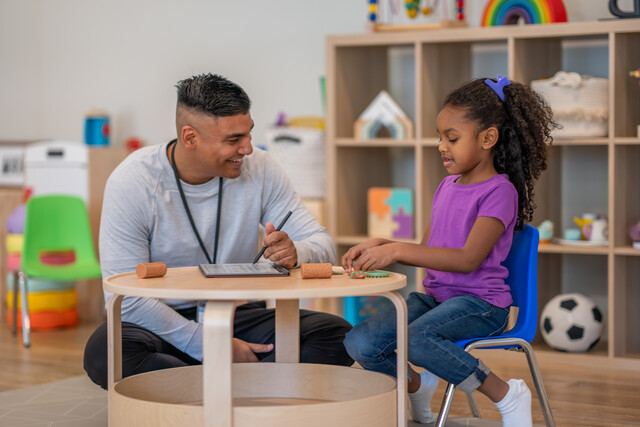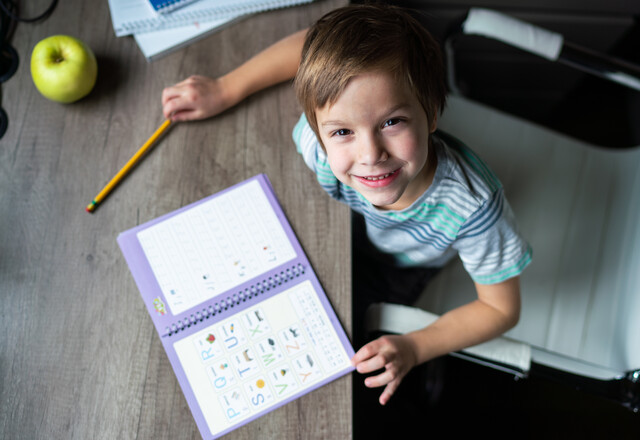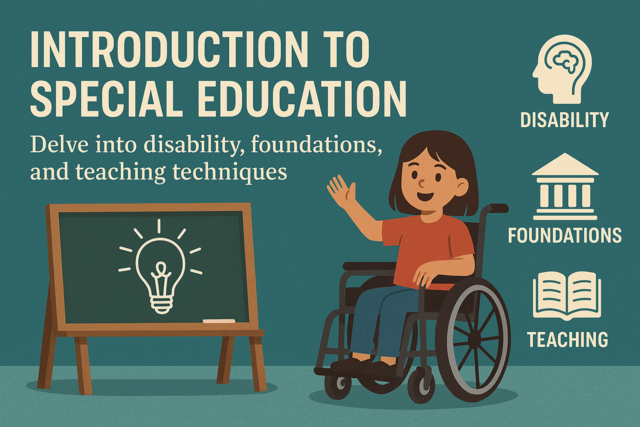For some educators, working with parents is either the most helpful, or one of the hardest, parts of teaching. While this topic does not affect the educator of adult students, it is a serious issue for teachers of children of all ages. Even college educators have occurrences where they have to deal with difficult parents, even though their students are usually adults. The best-case scenario is parents who are involved, interested, and willing to "partner" with the educator in the best interests of their child's education. The worst-case is parents who are completely disinterested, or even detrimental, to their child's learning -- or parents who are so overly involved, that they micro-manage their child's education and become a burden, rather than a help, to the teacher.
While the majority of parents will fall into the helpful category, it is important for new teachers to realize that not all parents will be helpful or involved. The extremes are borderline abusive, disinterested, and absent parents; on the other end of the spectrum, overly protective, micro-managing parents make teaching a difficult task and would wear out the patience of any educator. Many new teachers become disappointed and disillusioned to discover that some parents simply have little or no interest in their child's education. However, this is a reality the teacher must deal with.
Some problems that teachers will face in dealing with parents include:
Absent parents: Some parents are simply not available and have little contact with the school or their children's teachers. This may be due to the work obligations of a single parent household, addictions, mental illness, physical illness, or simple disinterest.
Possible solutions to dealing with absent parents: The educator should find out what it is exactly that is causing the parent to be absent. Sitting down with the student and asking them directly is the best method of getting this information. If the problem is lack of ability to attend meetings and conferences due to whatever circumstance, the teacher should offer to use another form of communication, such as telephone conference and email, or, if the reason is illness or physical disability, possibly a visit from the teacher at the home. When dealing with borderline abusive parents (those whom child services would not take action against, but neglectful to the point of concern), the teacher can offer counseling to the family, or, if the parents are unwilling, offer counseling to the student directly in the form of speaking with a qualified school counselor.
Micro-managing parents: Some parents get so involved in their child's education that their attention becomes overbearing for the student and the teacher. A parent who calls, emails, or shows up at the school daily or every few days, is a micro-manager. A parent who challenges every poor grade or disciplinary measure the teacher gives their child is a micro-manager. A parent who wants to know details about the home life, grades, and behavior of all of his or her child's classmates is a micro-manager.
Possible solutions to dealing with micro-managing parents: Kindly, but firmly, make the parent aware that frequent, unscheduled conferences are not possible. Have your school administrators back you up on this point. Suggest that she or he email questions and concerns with the stipulation that overly abundant correspondence cannot be answered promptly, or at the detriment of your classroom duties and responsibilities. Make the parent aware that you have a classroom of children to divide your time among, and that you cannot not discuss the personal information of other students. As long as you have a policy of giving grades that are deserved and earned and you are willing to stand by your decisions, do not change grades unless you mistakenly marked answers incorrect.
While the above situations are extreme and usually exceptions, the majority are parents who are willing to get involved to some extent in their child's education. These are the parents who attend parent/teacher conferences, respond to teacher requests and notes, help their children with projects and homework, and will support you in disciplinary actions. The best student outcomes are usually achieved when you can enlist the support of your students' parents. Some may have more time to contribute than others. Stay-at-home mothers or fathers can often help in the classroom by preparing for parties and events, supplying special treats or helping with paperwork. Others may work and can only contribute by offering special treats or monetary contributions for activities they cannot attend due to work obligations. In all cases, parents who have an interest in helping you meet their child's educational goals will be a boon in the classroom.
Try to meet parents face-to-face as soon as possible in the school year. Be sure to have parent/teacher conferences during the first month of the school year so that you can convey your expectations for their child's achievement and behavior. Allow parents to ask questions and if you cannot answer at the conference, get back to them via telephone or email. Give parents your email address, so they can get in touch with you for questions and concerns. Have another conference at mid-year to discuss progress and performance. Let parents know if their child is having problems in any area, and let them know how they can help the child overcome the issue.
- Ask them to show support for learning at home.
- Have them communicate positive feedback about your performance.
- Ask them if they may be able to volunteer to help in the classroom.
- Ask them if you can count on their support with fair discipline measures that you impose upon their child by imposing the same restrictions at home for misbehavior.
- Ask them to ensure that their children do their homework, projects, and reports.
- Ask them to speak to the class about their profession or job.
- Ask them to talk to you directly or via email about a problems and solutions.
Conclusion
Parents are your best ally in the classroom. They can help support you by teaching at home, backing up your fair discipline measures, making sure homework and projects are done, and by helping in the classroom. Stay in contact with those who show an interest, and attempt to make contact with those who seem disinterested. Be sure to find out what is going on with parents before you assume the worst; an illness or other situation may be keeping parents from attending conferences, or from making contact. Think of parents as your partners in their child's best educational interests. Solicit their help and support whenever possible for the best educational outcomes.
While dealing with extreme parents, misbehavior, and interruptions may be some of the most difficult parts of teaching, all teachers would agree that coping with violence is by far the worst problem to deal with. While this is less of a problem with younger children, violence can occur at any grade level. This behavior is dangerous and upsetting for other students and teachers, as well. There are many reasons violence occurs in schools and classrooms; it helps to understand the reasons, as well as tactics to avoid the occurrence in the first place.
OverviewManaging violent students and situations is something that every teacher should be prepared for. A good plan should be in place, whether you think you will need it or not. You may never have to use your managing violence plan, and that would be the ideal. If you are alert and sensitive to the moods of your students, and know which are having problems with violence, you may be able to thwart boiling tempers or aggressive behavior before a student explodes to the point of violence. However, every teacher should keep in mind that violence can occur suddenly and without warning, and that the unprepared teacher will be caught off guard and may end up intensifying the situation rather than calming things down.
Handling the Extremes
To use a football term, the best offense is a good defense. Essentially, you should be prepared to deal with student aggression before things get out of hand. The best way to do this is to stay calm. Staying calm is the number one best way to not intensify a tense situation. The teacher should remain as nonaggressive as possible in situations of student aggression. Students need a good example of how a mature adult handles hostility, anger, frustration, and out-of-control behavior. Many students who are violent and aggressive do not have a good, solid role model to emulate when life gets difficult, or, they may have good role models at home, but current friends are influencing their behavior.
It isn't difficult to spot the more aggressive students in your classroom at the outset; keep an eye on those students and try to work with them individually, offering them other outlets for their violent reactions to frustration or anger. Sports and other activities might be the answer for some students. Showing movies that address the issue of violence, and showing solutions and positive outcomes may also be useful. Many educators of high school students use William Shakespeare's Romeo and Juliet as an example of how violence and anger destroy love and potential. There are multiple novels, movies, and plays that can be used to teach students about the negative results violence brings to the aggressor(s) and the victim(s). Some will also help aggressive students identify with characters, so they don't feel isolated or more separate from others. Through these teaching aids, they may realize that the presence of violent, aggressive youth is not anything new, nor is it something they invented. Hopefully what students will see is that the end result of using violence to get what they want will end in frustration and impotence, rather than the power and control they are seeking.
Some tactics you can use to reduce the chances of violence occurring in your classroom are:
- Reduce access to possible victims.
- Establish reasonable norms and expectations.
- Avoid confrontation.
- Minimize competition.
- Use nonverbal signals and reminders.
- Provide desirable incentives.
- Intervene early, and before aggression turns to violence.
- Provide constant supervision, if required.
- Stay very calm, cool, and composed, no matter how difficult that may seem during a crisis.
- Do not be aggressive yourself. You may certainly be assertive, firm, and direct, by telling the student(s) to "stop," but do not, under any circumstances, threaten the student(s) verbally or physically.
- Stay out of the student's space.
- Be nonintrusive and noninvasive.
- Do not move toward the student, or invade his or her space.
- Communicate expectations calmly, but firmly. Always tell the student to stop, with an accompanying hand signal.
- Send for help and get rid of the audience.
- Don't argue, and do not respond to verbal abuse.
- Use physical intervention only as a last resort -- and then, only if policies permit you to do so and you are trained to do so.
Most experts agree that a teacher should only use physical restraint as a very last resort, and only if there is immediate danger of physical harm to the student or a victim. If you have no experience, or have not been trained in physical intervention, you should not attempt it unless you feel you have a reasonable chance of restraining the student. In other words, if you are a 120-pound, five-foot teacher, who is dealing with a 200-pound six-foot raging student, you should not try to subdue the student. If the student seems high, so angry that he or she is not at all listening, has a weapon or something that could be used as a weapon, do not try to subdue the student. If you are physical match for the student, and you feel you can reasonably restrain them until he or she calms down enough to come to their senses, then do so.
Conclusion
Student violence against teachers and other students is often frightening and difficult to deal with. Addressing the underlying issues that are causing violence in problem students might be the most effective defense a teacher has at his or her disposal. Suggesting sports or physical activity that will release some physical aggression is a good place to start. Offering alternatives to aggression to get what they want (reality/choice therapy) also works well for many aggressive students. A teacher should always be prepared for the possibility of violence, because these events often occur unexpectedly, and without warning. Try to use aggression and violence as a teaching tool and remember to stay as clam as possible in any violent situation.























